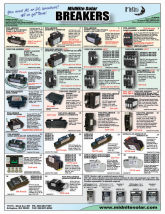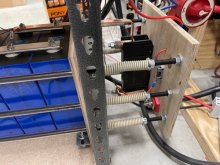the breaker i find are 12v - 48v but my Maximum voltage: 58.4V
this one is up to 48v
150 Amp Circuit Breaker with Manual Reset, 12V- 48VDC
i need it to be for like 60vdc
this one is up to 48v
150 Amp Circuit Breaker with Manual Reset, 12V- 48VDC
i need it to be for like 60vdc





